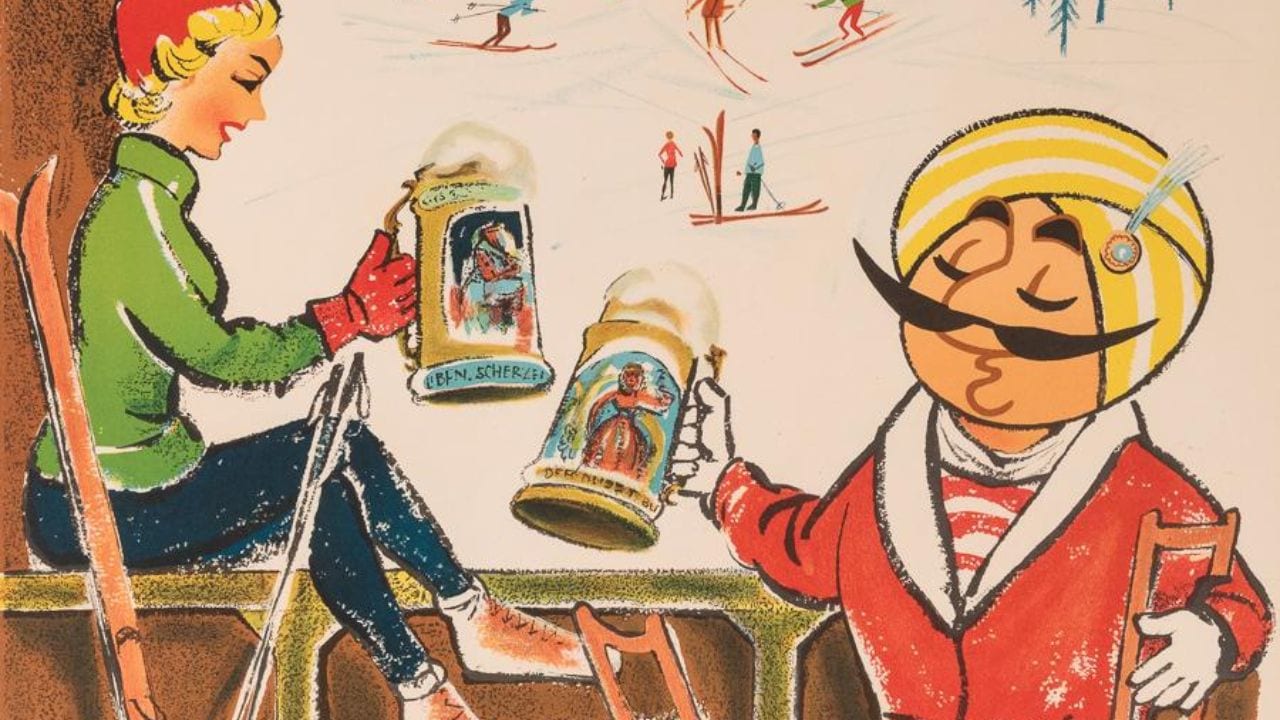It was the 1940s. Late Sorab Kaikushroo Kooka who was known as Bobby Kooka, the commercial director of Air India, was in deep imagination. A personality with a royal image, who had a round face with a long and sharp nose, outsized moustache, and striped turban was taking shape.
He did not wait too long. He reached out to Umesh Rao, who worked at JWT as an artist. Together, they breathe ‘Air India’s Maharajah’ to life. It was the year 1946. The Maharajah—which was born on an in-flight memo pad—in the 1950s became the ‘bowing’ face of Air India, previously Tata Airlines.
What remains a rarely known fact is that, the Maharajah’s famous moustache was designed after Kooka’s dear friend late Syed Wajid Ali, a Pakistan based industrialist, states Air-India collector, a website solely dedicated to understanding Air India, its history, the Maharajah and its journey in advertising and marketing themselves.
After Amul’s’ ‘Girl’, Air India’s Maharajah stands as the most successful mascot of the Indian advertising for having entertained India with its cheeky one-liners.
Last year, the airline brand, whose operations were taken care of by the government, came under the wings of the Tata Group. But, in a few months, the airline will bid a permanent goodbye to the mascot which once represented royalty and hospitality.
But, this is not the first time decisions surrounding the mascot’s retirement and rebranding are being undertaken. In the 1980s, San Francisco based Landor Associates was appointed for the rebranding exercise of the airline brand.
Right from the redesigning of all aspects of the airline followed by the introduction of the sun logo on the aeroplane’s tail which was a golden sun with 24 spokes embellished on a deep red sash, the rebranding exercise cost $35 million, an attempt to save the dwindling fortunes of the airline brand.
However, the aura and charm of the mascot could never be forgotten. Hence, in the early 1990s, Madhavrao Scindia, former minister of civil aviation, paved the way for Maharajah who reprised its role once again.
Let us dive into understanding some more of the lesser-known facts about the mascot.
Nandita Chalam, former senior vice president and executive creative director, JWT, shared…
According to former national creative director of HTA, Ivan Arthur, who has worked extensively on Air India ads, there were some unwritten rules to drawing the Maharajah, “He cannot open his eyes; he cannot open his mouth, and he cannot be shown with a bare head—the turban or some headgear must always be there.”
Come to think of it, have we ever seen the Maharajah’s bare head? Mercifully not. But in the later years—when the Tatas were no longer a part of Air India and HTA no longer handled the business—some artists did draw the Maharajah with his eyes open. And a change of personality was evident! Instead of a suave and regal Maharajah, he looked more like a fat, sleazy, old uncle. Those unwritten rules sure needed to be followed. Ivan also said that though it was never put down formally anywhere, every person working on the business knew instinctively that everything done for Air India “had to carry its DNA—a double helix of exotica and charm”.
Prabhakar Mundkur, former senior vice president at Hindustan Thompson Associates, shared…
Arthur recalls, “He was no commercial mascot. He became a national figure, much loved and respected”. There was a time when every middle-class home in India proudly displayed a little toy Air India Maharajah in their living room showcases along with other curios.
“We call him a Maharaja for the want of a better description. But his blood isn’t blue. He may look like royalty, but he isn’t royal. He is capable of entertaining the Queen of England and splitting a beer with her butler. He is a man of many parts: lover boy, sumo wrestler, pavement artist, vendor of naughty postcards, Capuchin monk, Arab merchant….,” is what SK ‘Bobby’ Kooka the commercial director of Air India is once known to have said. (Kooka was later chairman of HTA).
And most of all, he was an entertainer. He made people smile with his inimitable wit and humour. The magic behind the Maharajah was that his commentary would always have something to do with the current topics, touching a nerve with his audience. He had a different take on every event that made the news. And that is what kept him and brand Air India current in everyone’s minds.
